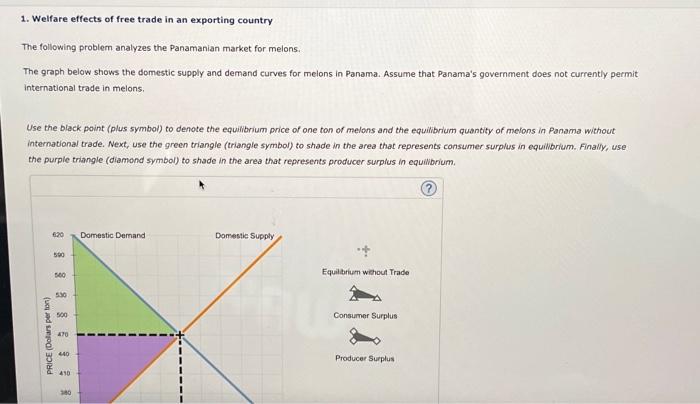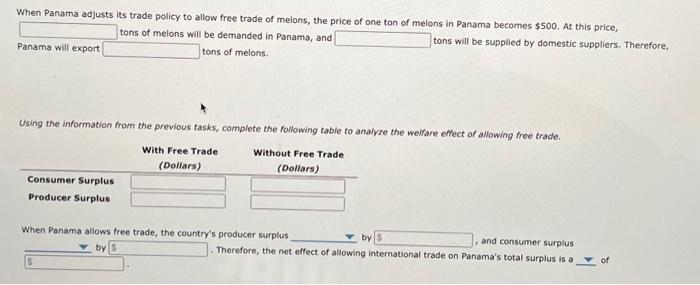1. Welfare effects of free trade in an exporting country The following problem analyzes the Panamanian market for melons. The graph below shows the domestic supply and demand curves for melons in Panama. Assume that Panama's government does not currently permit international trade in melons. Use the black point (plus symbol) to denote the equilibrium price of one ton of melons and the equilibrium quantity of melons in Panama without international trade. Next, use the green triangle (triangle symbol) to shade in the area that represants consumer surplus in equilbrium. Finally, use the purple triangle (diamond symbol) to shade in the area that represents producer surpius in equibrium. Based on the information from the previous graph, absent international trade total surplus is The following graph shows the same domestic supply and demand curves for melons in Panama. Now, suppose that the Panamanian government changes its stance on international trade, deciding to allow free trade in melons. The horizontal black line (P w) represents the world price of melons at $500 per ton. Assume that Panama's entry into the world market for melons has no effect on the worid price and there are no transportation or transaction costs associated with international trade in melons. Also assume that domestic suppliers will satisty domestic demand as much as possible before any exporting or importing takes place. Use the green triangle (triangle symbol) to shade in the area representing consumer surplus, and then use the purple triangle (diamond symbol) to shade in the area representing producer stoplus. When Panama adjusts its trade policy to allow free trade of melons, the price of one ton of melons in Panama becomes $500. At this price, tons of melons will be demanded in Panama, and Panama will export tons of melons. tons will be supplied by domestic suppliers. Therefore, Using the information from the previous tasks, complete the following table to analyze the welfare effect of allowing free trade. When Panama allows free trade, the country's producer surplus by and consumer surplus by . Therefore, the net effect of allowing international trade on Panama's total surplus is a of









